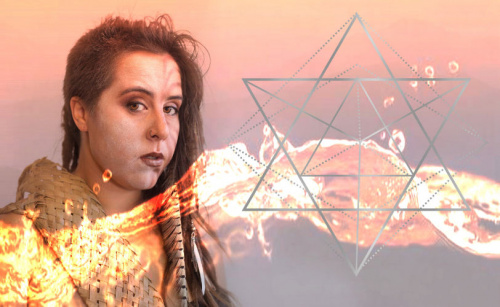HINE
Meteor Theatre, 1 Victoria Street, Hamilton
20/02/2020 - 21/02/2020
Hamilton Gardens Arts Festival 2020
Production Details
Once upon a time I was told that I was divine. Once upon a time I believed I was divine. Now I’m not so sure.
My mother told me once about a taniwha who had a great secret that would change the world as we know it. She lived on every bend of the river banks. She told me “ko te awa ko koe, ko au te awa.”
Ngā Hine are honoured to be sharing their Hine kaupapa as part of the Hamilton Garden Arts Festival.
Hine dances the veil between our divinity and our human reality, reclaiming the sacredness of Papatūānuku, Earth Mother, through ceremony, dance, and waiata. The show activates te mana o te wahine, celebrating te whare tangata by weaving together sacred stories and sacred rites.
Hamilton Gardens Arts Festival 2020
Meteor Theatre
Thu 20 Feb – Fri 21 Feb 2020
7.30pm
$30 General Admission
$27 Concession
BOOK NOW
Dance-theatre , Dance , Music ,
1 hr
Engaging ritual, blessing and the everyday world
Review by Dr Debbie Bright 21st Feb 2020
Haere mai ki ngā wāhine o te rōpu Nga Hine
Haere mai ki ngā whenua o Tainui
ki te awa nui o Waikato
Ngā mihi ki a koutou
Waikato te awa Katohia, katohia
He wai e mau
Katohia he wai e mau
Ka eke ki te puuaha o Waikato te awa,
he piko he taniwha, he piko he taniwha…
[Once upon a time I was told that I was divine. Once upon a time I believed I was divine. Now I’m not so sure.
My mother told me once about a taniwha who had a great secret that would change the world as we know it. She lived on every bend of the river banks. She told me “ko te awa ko koe, ko au te awa.”
Hine dances the veil between our divinity and our human reality, reclaiming the sacredness of Papatūānuku, Earth Mother, through ceremony, dance, and waiata. The show activates te mana o te wahine, celebrating te whare tangata by weaving together sacred stories and sacred rites.]
[From material provided by Nga Hine].
We, the audience, are welcomed into the theatre by the sound of pῡtāra, a haunting call… haere mai…come…we welcome you…come and join us…breathe the same air as us and experience the interwoven sacredness of seen and unseen worlds.
We enter to the sight of two women lying facing each other in centre stage, with enlarged fabric pito (umbilical cords) reaching to the heavens. We are embraced by muted, bluish, dappled light, like sun through water, a sense of the unearthly. And the sounds of taonga puoro (traditional Māori musical instruments), calling to heart, soul, spirit.
Spaces for music are set up on either side of the stage on darkly patterned whāriki (carpets) with cushions, seats and microphones; musicians come and go, make music with voice and instrument – traditional instruments: he pῡtōrino, he hue, he kōauau, he karanga weka, he pūkāea, he roria, he perehua, te mea te mea… and modern instruments: guitar, violin, flute…
The two women stretch, roll and return to their resting place. Then they begin to move, to dance, becoming separated from their umbilici, which remain stretched to the heavens and trailing along the earth. Other women appear. Dancers with strong, flowing, richly indulgent movement. A timelessness crossing generations – a woman with a baby speaks of growing up in the Waikato. Then she sings Waikato te awa….he piko he taniwha. A sense of ritual, of sacred ceremony. Music: constant sound with haunting rhythms, cadences, calls. And the sudden entrance of the everyday earthly living: the kuia who bustles, stutters and is stirred and stressed by her sense of connectedness with the Land, her everyday responsibilities and demands, together with her frustration over the ‘modern knowledge’ that doesn’t always get it ‘right’. She enacts and tells (in English) of everyday concerns, of the traditional world meeting the modern world, and a scenario of changing ‘modern knowledge’ and its slowness to recognise that sometimes indigenous knowledge does know – the traditional wisdom of the river, of how nature works best. Here is a meeting of the everyday, of earthly busy, demanding life, mingling with the unseen world of muted light, mysterious beings, timelessness, and the sounds and rituals that bring the two together.
Costumes are in muted cream, beige, white with wraps and tassels, ties and weavings. Except for the kuia whose darker more colourful clothing marks her out as a woman of today’s world, as earthly meets the divine. Most musicians join the dance movement, while others maintain the cadences, rhythms and melodies of traditional and contemporary music. We are invited to witness a series of women’s rituals and acts of blessing. Healing of the women, blessings and healing of the Land… All is now seen as a prayer of healing, a prayer of blessing, of affirmation, of love.
The presentation ends. Standing ovation. We all wait. Something else is needed. A women’s mihi sounds from the back of the audience. We sing a waiata and tautoko a final karakia. Then, there is a breath of movement and our time together is ended.
Kua kī tōku ngākau.
Ka kai te hunga māhaki, a, ka mākona
[My heart is full.
The meek shall eat and be satisfied].
Copyright © in the review belongs to the reviewer







Comments